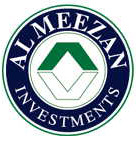 |
 |
 |

Time value of money in Islamic banking: By Najmul Hassan |
|||
Unlike conventional banking based on interest-bearing loans, funds invested in an Islamic bank are used essentially for trade. There is no room for ambiguity in Islam “every loan that draws a gain is riba.” Many people question whether Islamic finance differs meaningfully from conventional finance. Outwardly in form, many structures do bear a similarity in various respects. The present day operating environment is a conventional one--, from market structuring and dynamics, to rate benchmarks and circulation of money, to regulatory controls as well. However, the way these two types of finances function with respect to core defining parameters is very different. Many things look the same but are in essence differ in fundamental perspectives. We begin with basic principles. One is interest-based money lending while the other operates like a trading house. What allows this difference? Two core principles lie at the centre, elimination of Riba and Gharar. Any Islamic transaction needs to assess these two things first. Keeping in mind the definition given in Hadith, one can discuss time value of money and the workings of present day Islamic banks. For this, we would have to look at the differences in ways in which modern capitalist theory views ‘money’ and ‘commodity’ from the principles defined by Islam. According to capitalist theory, there is no difference between money and commodity in so far as commercial transactions are concerned. Accordingly, both are treated at par and can be sold at whatever price parties agree upon. For them selling Rs100 for Rs110 or renting Rs100 for a monthly rental of Rs10 is the same as selling a bag of rice costing Rs100 for Rs110 or renting a fixed asset costing Rs100 for a monthly rental of Rs10. Islamic principles differ from this concept as money and commodity have different characteristics, for instance (a) money has no intrinsic value but is only a measure of value or a medium of exchange, it is not capable of fulfilling human needs by itself unless converted into a commodity, while on the other hand a commodity can fulfil human needs directly, (b) the commodities can be of different quality while money has no differential quality in the sense that a new note of Rs1,000 is exactly equal in value and quality to an old note of Rs1,000, (c) commodities are transacted or sold by pinpointing the commodity in question or at least by giving certain specifications. Money however cannot be pinpointed in a transaction of exchange. Even if it is, it would be of no use since the different denominations of money summing into equal amount are exactly the same. Keeping in view these differences, one would agree that exchanging Rs1000 with Rs1100 in a spot transaction would make no sense since the money in itself has no intrinsic utility or a specified quality and thus the excess of amount on either side is without consideration and hence not allowed under Shariah. The same would hold true if we were to exchange these Rs1000 with Rs1100 to be delivered after a period of one month, since the excess of Rs100 would be without any consideration of either any utility or quality but only against time. The same is not true when commodities are involved. Since a commodity is known to posses an intrinsic value and quality, the owner of such a commodity is allowed to sell it at whatever price the buyer and himself mutually agree provided the seller does not commit a fraud but is subjected to the forces of demand and supply. This would hold true even if the price that is mutually agreed upon is higher than the prevailing market price. In conclusion, any excess amount charged against deferred payment is Riba only where money is exchanged for money, since the excess charged is against nothing but time. The proof lies in the fact that if the debtor fails to repay at the stipulated time, extra money is charged from him. In contrast, where a commodity is being exchanged for money, the seller may take into consideration different factors (like demand and supply situation, quality, utility, special features etc) including the time of deferred payment. It is true the seller may take the factor of time in increasing the price of his commodity in credit sale but the increased price is being fixed for the commodity and not exclusively for time nor the time is the exclusive consideration in fixing the price; therefore once the price is fixed it relates to the commodity and not to the time. For the same reason if the purchaser fails to pay at the agreed time, the price will remain the same and the seller under no circumstances would be allowed to charge more than what he actually owes. Keeping in mind the above discussion, the use of KIBOR as a benchmark by Islamic banks in calculating the selling price of their commodities in Murabaha sale transactions is not only justified but necessary to remain competitive given the current banking industry dynamics in which Islamic banks have a pretty low share in the banking industry. It must be understood that the use of KIBOR as a benchmark to determine the profit is only for indicative purposes and this does not make the transaction impermissible if all the conditions of a valid sale are fulfilled. It is quite frequently observed that every trader whether large multinational trading corporations or a roadside store decide on their profit margin rates based on various factors of which a major variable is the competitive environment in which the trader operates his business. If a rice trader or a cloth merchant uses KIBOR as the basis of adding profit margins to the cost of their commodities and arriving at the price, this would not tantamount to interest or Riba and would not make transaction impermissible. Similar is the case with Islamic banks when they arrive at the selling price of their commodities using the KIBOR. In contrast conventional banks price their loans based on the KIBOR, which does result in Riba since it is an exchange between money and money and not a sale transaction in which commodities are exchanged with money. It is being questioned in some circles whether Islamic banks could price their commodities by applying some other benchmark rate. The rationale behind using KIBOR is the banking environment dominated by conventional banks, which discourages the development of an Islamic benchmark rate. However, as more and more Islamic banks come into the operation, an inter-bank market between Islamic banks will be created and a new benchmark for the Islamic banking industry can be developed. The writer is general manager, corporate and business development, Meezan Bank |
|||
| Back to main | |||
 |
 |
 |
|
 |
|
 |
|